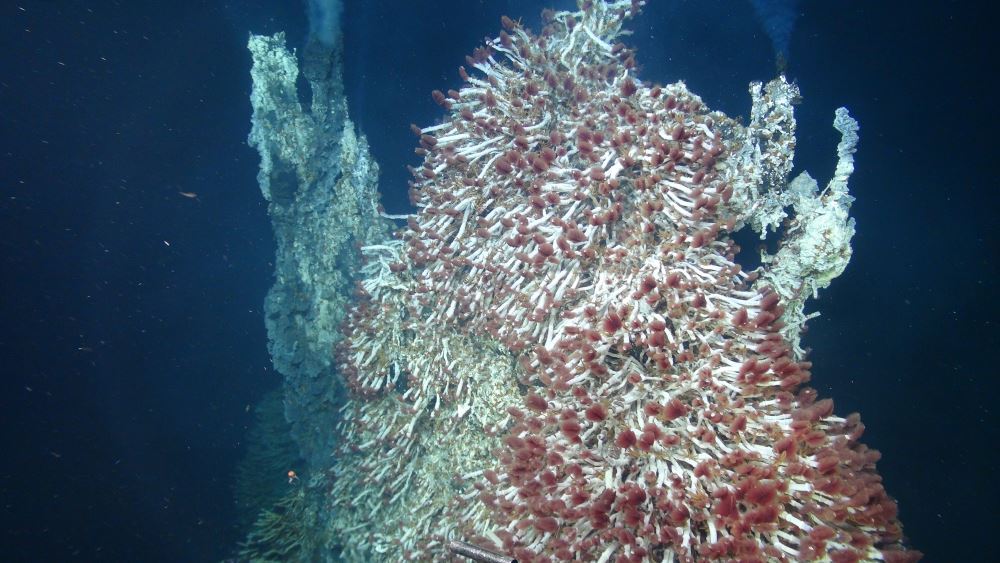16.07.2025

The hydrothermal microbes Holden studies thrive in lightless, oxygen-less conditions a mile or more beneath the ocean’s surface. Credit: James Holden.
Scientists are looking down at the alien-looking creatures on the bottom of Earth’s deep sea to figure out what kind of extraterrestrial life may exist up in space.
Extraterrestrial life is most likely to be microbial, contrary to popular culture’s depiction of little grey beings with big heads and black eyes. There are some candidate moons and planets within our own solar system which could harbour such life.
The discovery of life evolving somewhere else would be one of the greatest in the history of science, answering the age-old question: are we alone?
Finding extraterrestrial life within our own solar system would suggest that, not only are we not alone, but the universe is likely to be teeming with inhabited worlds.
One candidate for extraterrestrial life is Europa, Jupiter’s fourth largest moon.
Europa has a surface of solid ice. But it is one of at least 3 Jovian moonswhich astronomers believe could have salty oceans of liquid water beneath its icy exterior. NASA observations suggest that Europa’s icy crust could be 15–25km thick. The liquid ocean beneath could be up to 150km deep.
One more ingredient would make Europa habitable: if the moon has a hot, molten core which supplies the ocean floor with heat and crucial minerals.
“We think, based on our own planet, that Europa may have conditions that can support life,” says James Holden, a microbiologist at the University of Massachusetts Amherst in the US.
Holden is leading an expedition, not to outer space, but to a region which is even less understood: Earth’s deep ocean floor. He believes that the hydrothermal vents thousands of metres beneath the surface are prime sites to study what life on other worlds might be like.
“I’ve been looking at deep-sea volcanoes since 1988,” he says. “To get our microbes from them, we use submarines – sometimes human-occupied, sometimes robotic – to dive a mile below the surface and bring the samples ashore and back into my lab.”
NASA has awarded Holden’s team nearly $1 million (US$621,000) to study Earth’s deep-sea microbes over 3 years, providing insights into possible life on Europa including what signs to look for to confirm whether Jupiter’s moon also supports life.
“Because Europa’s conditions might be similar to the conditions these microbes come from, we think that Europan life, if it exists, should look something like our own hydrothermal microbes,” Holden explains.
“We have long had a basic interest in knowing if there is life beyond our planet and how that life would function. It’s exciting to think that the answer to the secret might be here on our own planet.”
On Earth, deep-sea microbes produce energy by breaking down hydrogen from the hydrothermal vents using enzymes called hydrogenases. Different types of hydrogenases work in different ways, performing a variety of functions in different cells.
Holden’s team will use their understanding of Earth’s deep-sea microbes to try and understand how microbes on a world with different chemistry would live.
“We need to figure out the different chemical processes that Europan microbial life might be using in order to create energy,” Holden says. “Different chemistries could create very different kinds of microbes.”
NASA’s Europa Clipper spacecraft launched in October 2024 and is on a 5-year mission to provide new observations of Jupiter’s moon which could, along with insights from Holden’s Earth-based studies, provide evidence that there is life on Europa.
Quelle: COSMOS
